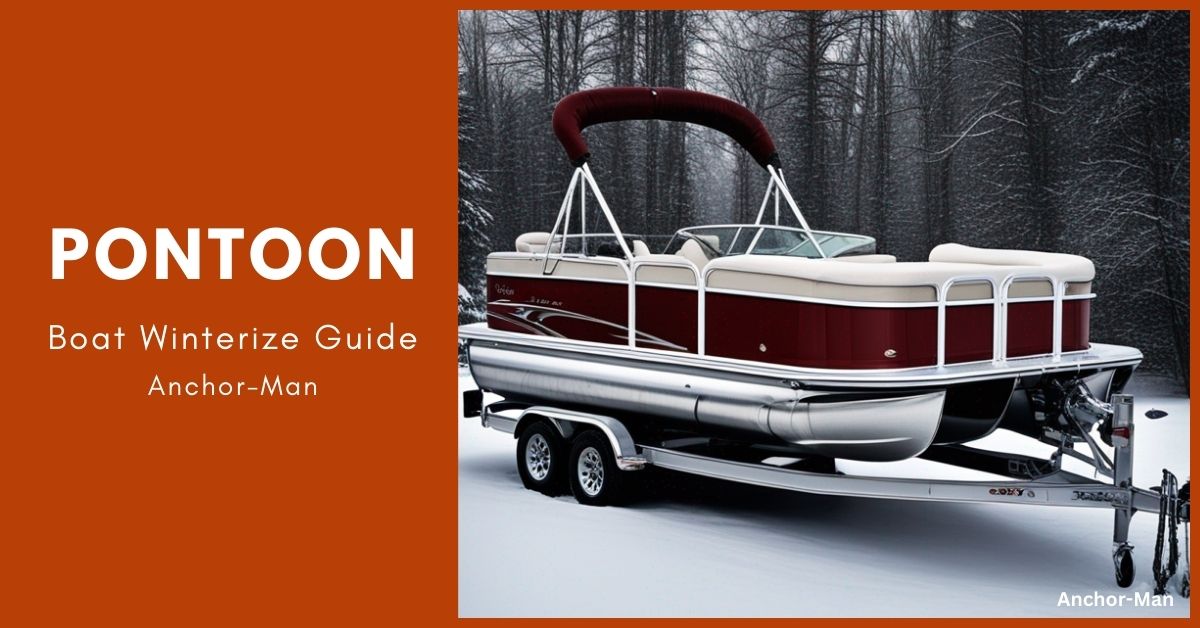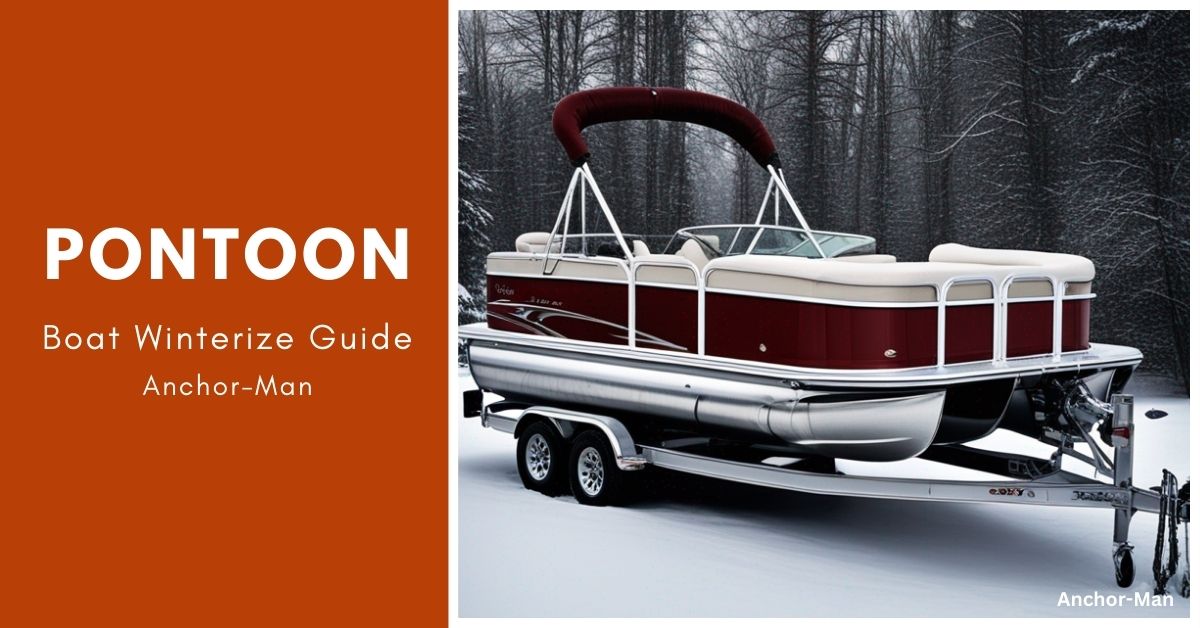
As the winter season approaches, it is important for pontoon boat owners to take necessary actions to winterize their boats. This is not only a seasonal task but also an investment in the longevity and performance of your pontoon.
In this comprehensive guide, we will take you through the essential steps to ensure your pontoon is well-prepared for the winter months and ready for a new boating season when spring arrives.
Exterior Cleaning: Guarding Against Corrosion
Your pontoon's exterior acts as its protective shield. Dust, dirt, and especially salt buildup can slowly wear down that shield, making your boat susceptible to a common foe: corrosion.
This toxic substance can damage metal parts, weakening your boat and leading to costly repairs.
That is why giving your pontoon a complete cleaning before winter is like donning a fresh, polished shield! Here is a simple guide:
- Clean away the dirt: Use mild soap and water (like a gentle car wash, not strong detergents!), a soft sponge, and a gentle brush for tough spots. Rinse thoroughly to remove all loose dirt and salt.
- Target salt-prone areas: Salt is a devious component that can hide in tricky spots, such as around the rub rail, trailer bunks, and any splashed areas. Rinse these spots particularly well.
- Don't forget the nooks and crannies: Use a soft brush to reach tight spaces like the engine compartment, under seats, and around cleats. These areas are perfect hideouts for dirt and salt.
- Dry it all up: Instead of letting your boat air-dry, which can invite water spots, use a clean, soft towel to dry every part. This ensures your boat is gleaming and free from corrosion.
Interior Cleaning: Warding Off Mildew and Caring for Cushions
Before winter arrives, it is essential to clean the interior of your pontoon, just like you would with your home. Here is how to maintain a fresh and mildew-free space:
- Upholstery Refresh: Use a recommended upholstery cleaner (refer to your owner's manual) to clean away dirt, food spills, or sunscreen stains gently. Remember, be soft, as harsh chemicals can harm the fabric.
- Mildew Prevention: Keep an eye out for mildew in damp, dark areas such as under seats, in storage compartments, and around the bimini top. If you spot anything, there is no need to worry! A mixture of mild soap and water or a designated mildew remover should do the job. Rinse thoroughly and ensure complete drying.
- Cushion Care: Show some love to those comfortable cushions! Take them off the boat and store them in a cool, dry place with good ventilation. Avoid stacking them, as this can trap moisture and create a haven for mildew. If you are concerned about mildew, sprinkle baking soda on the cushions before storing. It is a natural odor absorber and mildew fighter!
Following these short steps, you will create a clean and inviting interior for your pontoon, keeping those troublesome mildew at bay. Remember, a little cleaning now goes a long way in safeguarding your boat for the adventures of the next season.
Boat Engine Winterizing Tips: Keeping Your Pontoon's Heart Happy All Winter
Your engine is the heart and soul of your pontoon, so for winterizing your boat engine, giving it some extra winter care is crucial! Here is a breakdown of the key steps:
Oil Change & Filter Replacement
Think of your engine as the heart of your car. Just as you would not drive with dirty oil, changing your boat's oil before winter is crucial. Aged oil can thicken and create issues when starting up in spring. Installing a new filter captures impurities, promoting a happy and healthy engine. Consider it a fresh beginning for your boat's internal systems!
Fuel System: Eliminating Old Fuel & Deposits
Imagine your fuel system as your boat's digestive system. Over time, old fuel can degrade, leaving behind unwanted deposits that can block functionality. To stop a spring startup nightmare after winter, follow these steps:
- Drain the old fuel: While it might seem intimidating, your owner's manual will safely guide you through the process. Consider it a way to flush out the unwanted components!
- Add a fuel stabilizer: This special solution acts as a protective shield, guarding your fuel system from the harmful effects of winter dormancy. Pour it in, like adding oil to your car, and carefully follow the instructions.
- Fuel system cleaner (optional): If you feel particularly cautious, consider using a fuel system cleaner before adding the stabilizer. To prepare your system for the winter season, it is crucial to remove any existing deposits. This will ensure that your system is clean and functioning efficiently.
Cooling System: Boat Engine Winterizing Antifreeze
Imagine your boat's cooling system as its internal air conditioner. When temperatures plummet, the water inside the system can freeze, leading to significant damage. Enter antifreeze – a special coolant that remains liquid even in the coldest weather that safeguards your engine.
Here is what to do:
- Consult your manual: Different antifreeze types are available, so refer to your owner's manual for the right one for your boat and atmosphere.
- Drain the old coolant: Similar to draining the fuel, follow your manual's specific instructions for your engine model.
- Refill with antifreeze: Fill the system with the recommended antifreeze mixture, ensuring adequate protection for your engine throughout winter.
Fogging the Engine: A Protective Smoke & Mirrors Technique
Think of fogging oil as a magical smoke screen for your engine's internal parts. It forms a protective barrier against corrosion and moisture buildup while your boat rests. Here is how to use it:
- Follow the instructions: Fogging oil comes with specific usage instructions, so pay close attention and follow them carefully. Typically, this involves spraying the oil into specific openings on your engine while running it briefly.
- Don't forget the spark plugs: After fogging, remove the spark plugs and add a small amount of fogging oil directly into the cylinders. This provides extra protection for these essential components.
By following these steps, you will give your engine the care it deserves, ensuring it wakes up ready to go when spring arrives! Remember, a little winter preparation goes a long way in safeguarding your boat's most crucial component, making your future boating adventures worry-free.
Battery Care: Keeping Your Pontoon's Power Source Energized
Your boat's battery serves as its electrical heart, supplying power to everything from the engine to the lights. Before going into hibernation during winter, it is important to give your belongings some tender loving care (TLC). Here are some instructions on how to do it:
1. Disconnect & Clean
- Prioritize safety: Refer to your manual for specific instructions on safely disconnecting your battery. Once disconnected, remove it from the boat.
- Terminal shine: Use a wire brush or terminal cleaner (refer to the manual for recommendations) to eliminate any corrosion on the battery terminals. Consider it a teeth-cleaning session for your battery!
- Indoor storage: Protect your battery from harsh winter elements in a cool, dry indoor space, such as a garage or basement.
- Trickle charger: Connect this device to your battery for a small, continuous charge, ensuring it stays topped up throughout winter – think of it as a soft energy drip!
- Periodic charging: If a trickle charger is not available, manually charge the battery every few weeks using a battery charger. Remember to disconnect it afterward.
- Raise it up: Follow your manual's instructions to lift the outdrive out of the water, preventing freezing damage and facilitating easier cleaning.
- Flush it out: Use fresh water to flush away any salt, sand, or debris – akin to giving it a refreshing shower after a long summer!
- Corrosion protection: Apply a protective spray or coating to the outdoor unit that will act as a sunscreen for your boat during winter.
4. Miscellaneous Tasks: Remember the Extras!
- Drain live-wells: Stop freezing and potential damage by removing any standing water.
- Remove electronics: Detach portable electronics like fishfinders or radios to avoid cold temperature damage.
- Winterize optional equipment: Follow specific winterizing instructions for additional equipment, such as bimini tops or tow ropes.
Grease and Lubricate Your Pontoon Boat
If you want to maintain your pontoon boat's condition at the top, it is important to grease and lubricate its fittings. Begin by locating the grease fittings, which are typically found in the steering mechanism area.
Once you find them, apply a high-quality marine lubricant to prevent rust, corrosion, or oxidation.
Be sure to follow the specific instructions provided in your owner's manual, as the greasing process may vary depending on the type of pontoon boat you have.
Pontoon Boat Storage Tips: Tucking Your Pontoon In for a Safe & Sound Winter Nap
Now that your pontoon is prepped and ready, it is time to choose its winter haven! But before you tuck it in, remember these key storage tips:
Ventilation is Key: Breathe Easy, Boat!
Think of your boat as a living thing (even in its winter slumber!). Proper ventilation is crucial to prevent moisture buildup, which can lead to mildew growth and damage. Here is how to ensure your boat gets its fresh air:
- Choose a well-ventilated location: Opt for garages, sheds, or covered boat slips with good air circulation. Avoid completely enclosed spaces with no airflow.
- Open hatches and vents: Leave some hatches and vents slightly open (weather permitting) to allow air to flow freely and prevent moisture accumulation.
How to Cover Pontoon Boat for Winter: Choosing the Right Armor
Your boat cover is akin to its winter coat, shielding it from the elements. However, different covers are suited to various situations:
- Canvas covers: Sturdy and breathable, perfect for outdoor storage in mild climates.
- Shrink wrap: Forms a secure, waterproof seal, making it ideal for outdoor storage in harsh weather.
- Mooring covers: Provide primary defense against dust and debris but are not suitable for winter storage.
Choose your pontoon boat winter cover based on your storage location and climate. Ensure it is tightly secured to prevent potential wind damage.
Security Matters: Keeping Unwanted Guests Away
Ensure your winterizing efforts do not face interference from unwanted visitors! Safeguard your boat like a pro with these specific steps:
Start by using a robust lock to secure the trailer hitch and any storage compartments, creating a hassle for potential thieves.
For an additional deterrent, think about incorporating wheel locks, making it practically impossible to roll your boat away. For the utmost peace of mind, invest in a boat alarm system that will blare sirens if anyone attempts to tamper with your cherished vessel.
Lastly, store your boat in a well-lit area or contemplate installing security cameras to maintain a vigilant watch, both day and night. By incorporating these precautions, you can rest assured that your boat will be patiently waiting for you when spring arrives, ready for another season of adventure!
Pontoon Winterizing Recap: Investing in Your Boating Future
Remember, winterizing your pontoon is not just a task but an investment in its durability and performance. Taking the time to prepare your boat adequately will help you avoid costly repairs in the future, ensuring it is set to hit the water with you the moment spring arrives.
So, give yourself a pat on the back, adventurer! You have successfully navigated the winterizing journey and secured your pontoon for a peaceful slumber. Now, envision sunny days on the water, knowing that your boat will be waiting, ready to create new memories when the time is right. Happy boating, and see you on the waves soon!
Bonus Tip: If you feel a bit lost, do not hesitate to ask a friendly marine professional for help! They are more than happy to guide you through the process and ensure your pontoon enjoys a safe and sound winter slumber.